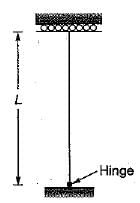Compression Members - 3 - Civil Engineering (CE) MCQ
10 Questions MCQ Test - Compression Members - 3
Battening is preferable when the
1. Column carries axial load only
2. Space between the two main components is not very large
3. Column is eccentrically loaded
The correct answer is
1. Column carries axial load only
2. Space between the two main components is not very large
3. Column is eccentrically loaded
The correct answer is
The maximum slenderness ratio of a compression member carrying both dead and superimposed load is
The maximum slenderness ratio of a steel column, the design of which is governed by wind or seismic forces is
Consider the following statements:
1. The two angle sections placed back to back are most frequently used in roof trusses.
2. A built-up section consisting of two channel sections back to back is occasionally used.
3. The local buckling of a compression member limits its size.
Which of these statements are correct?
Compression members composed of two channels back-to-back and separated by a small distance are connected together by riveting so that the minimum slenderness ratio of each member between the connections, does not exceed
Tacking rivets in compression plates not exposed to the weather, have a pitch not exceeding 300 mm or















